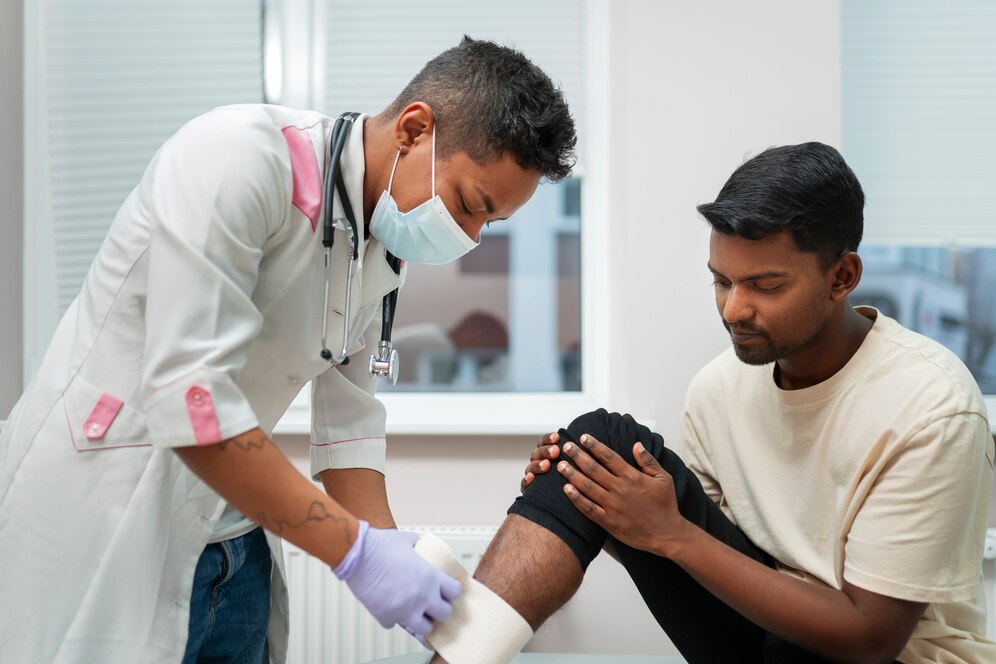Auto Injury and Leg Injuries: Causes, Symptoms, and Treatment
Auto accidents often result in leg injuries, ranging from mild sprains to severe fractures. These injuries can significantly impact mobility and quality of life if not treated promptly. This article explores the causes, symptoms, and treatment options for leg injuries caused by auto accidents.

Common Causes of Leg Injuries in Auto Accidents
Leg injuries in car accidents are typically caused by:
- Direct Impact: Collision with the dashboard or door during a crash.
- Sudden Twisting: Abrupt movements that strain muscles or ligaments.
- Crushing Forces: Severe trauma leading to fractures or soft tissue damage.
Types of Leg Injuries
- Fractures:
- Femur Fractures: Require significant force and often involve severe pain and deformity.
- Tibia and Fibula Fractures: May be less obvious but cause swelling, bruising, and difficulty walking.
- Treatment involves immobilization with splints or casts, and sometimes surgery with metal plates or pins.
- Sprains:
- Occur when ligaments are stretched or torn due to twisting motions.
- Symptoms include pain, swelling, and bruising.
- Mild cases can be treated with the R.I.C.E method (Rest, Ice, Compression, Elevation), while severe sprains may require surgery.
- Strains:
- Involve overstretching or tearing of muscles or tendons.
- Commonly affect the hamstrings or calf muscles.
- Treatment includes rest, physical therapy, and sometimes surgical intervention for severe cases.
- Soft Tissue Injuries:
- Contusions (bruises) or tendon damage caused by blunt trauma.
- May require compression bandages and physical therapy for recovery.
Symptoms of Leg Injuries
- Severe pain that worsens with movement
- Swelling and tenderness
- Bruising or discoloration
- Deformity in the affected area
- Difficulty bearing weight or walking
- Muscle spasms or cramps.
Treatment Options
- Immediate Care:
- Immobilize the leg to prevent further damage.
- Apply ice packs to reduce swelling.
- Elevate the leg above heart level.
- Medical Intervention:
- Imaging tests (X-rays, MRIs) to diagnose fractures or soft tissue injuries.
- Surgery for severe fractures or ligament tears.
- Pain management with medications like NSAIDs or acetaminophen.
- Rehabilitation:
- Physical therapy to restore strength and mobility.
- Gradual weight-bearing exercises under medical supervision.
FAQs
1. What are the most common leg injuries caused by auto accidents?
Common injuries include fractures of the femur or tibia, sprains of the knee or ankle ligaments, and muscle strains.
2. How do I know if my leg injury requires urgent medical care?
Seek immediate care if you experience severe pain, swelling, deformity, inability to walk, or numbness in the affected area.
3. What is the R.I.C.E method for treating leg injuries?
The R.I.C.E method stands for Rest, Ice application, Compression with bandages, and Elevation to reduce swelling and pain.
4. Can physical therapy help recover from leg injuries after an auto accident?
Yes, physical therapy is essential for restoring strength, mobility, and flexibility after fractures or soft tissue damage.
5. How long does it take to recover from a leg fracture?
Recovery time varies; minor fractures may heal in 6–8 weeks, while severe fractures requiring surgery could take several months.
Welcome to our clinic, where your recovery from auto-related leg injuries is our top priority! Our compassionate team is dedicated to providing you with the expert care you need to get back on your feet. Visit us at https://specialtycareclinics.com/ or call us at (972) 865 4454 to schedule an appointment today!
